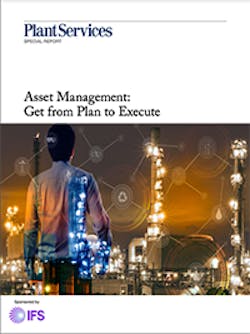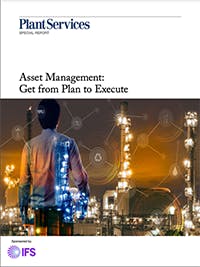What is asset criticality, and how can it drive your maintenance strategy?
Everyone knows that a strong asset management strategy is the cornerstone of any successful reliability program. But in a world with limited time, resources, and workers, deciding which assets deserve the most attention can mean the difference between the success or failure of your reliability program. A core part of your strategy should be performing an asset criticality analysis, to rank and prioritize the assets that are critical to avoiding unplanned downtime at your plant.
Below is a step-by-step guide on how to analyze your assets and determine criticality for each, and then how to use this analysis to drive your reliability strategy forward.
What’s in the number?
The first step in setting up a criticality analysis model is to define those characteristics that will be used to analyze each maintainable asset. These characteristics should cover a wide range of business attributes.
Each characteristic should then be weighted using a scale from 0 to 10 to identify significance to the business. The greater the scale the easier it will be to accurately identify critical assets, however, the total score possible should not exceed 100. By setting a limit of 100, you are reinforcing the weight of each characteristic.
Read "Managing assets by criticality"
Critical versus non-critical
Once you identify critical assets, you and your team should treat them differently than non-critical assets. Just as you classify spare parts using the ABC or XYZ classification system to identify high-volume or high-dollar-value parts, so should you classify asset criticality. This ensures you’ll expend precious resources, time and money on the more important assets.
Most CMMS packages have multiple priority fields to help you prioritize maintenance work. Almost every vendor includes a field for asset criticality (urgent, level 1 priority, level 2 priority, etc.) on the asset master file, as well as a time-based priority on the work order. Some vendors have added a check box or a numeric field for jobs that have a health, safety or environmental impact. Many vendors also provide one or more additional user-definable priority fields that give even greater flexibility to define criticality.
Read "CMMS can rank your critical assets"
Why the software matters
Asset management software (EAM/CMMS) augments criticality analysis for machine sets and enables utilization of that information, helping companies to systematically lower their operating costs and improve reliability, says Tim Dortch, founding principal of Reliability Solutions.
“When it comes to criticality analysis, people have to remember that the software isn’t going to do it for you. There are methodologies you will have to use to find out where and why you are having breaks,” adds Dortch. “We use Asset Strategy Development (ASD), which is an RCM analysis hybrid. It drives you to the criticality of a piece of equipment and the things that you’d better do right to maintain the equipment correctly.”
Read "How asset management software enables better asset criticality analysis"


